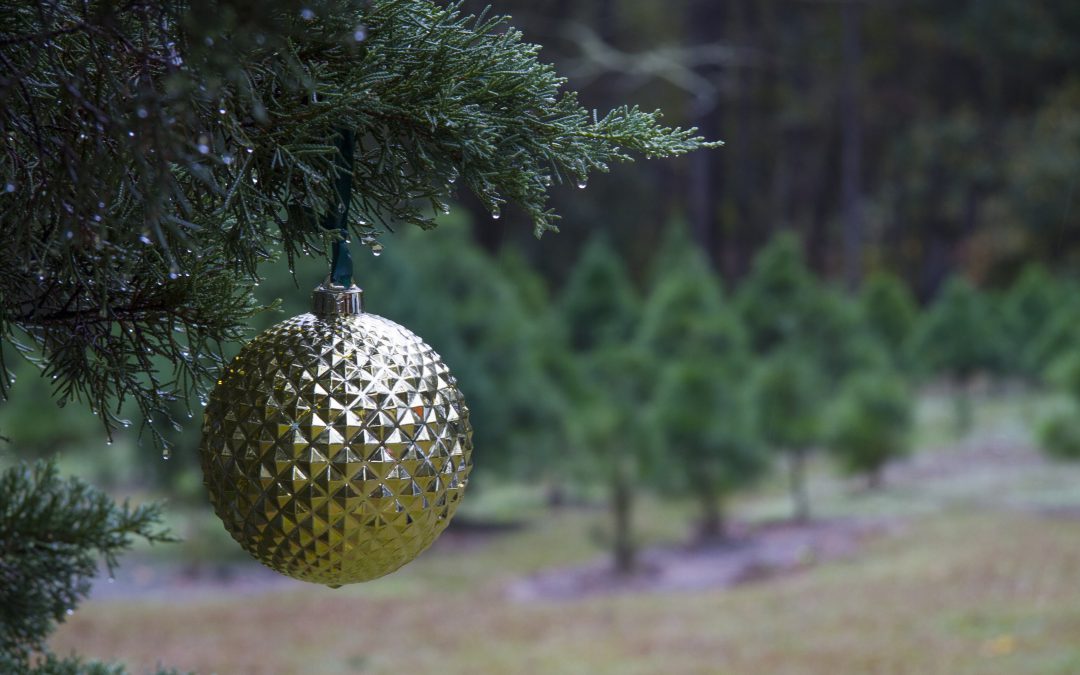
by Larry Williams | Dec 13, 2024

Christmas cactus in bloom. Credit: Larry Williams
Christmas cactus, poinsettia and amaryllis are some of the flowering holiday plants that can be kept for enjoyment after the holidays are gone.
These plants require bright, indirect light. They should be placed close to a sunny window and turned once a week to prevent them from leaning toward the light. In rooms with poor light, place your plants under incandescent or fluorescent lamps, but not too close to incandescent light due to the excessive heat.
Keep temperature cool for best results with plants associated with the holidays. Ideal temperatures are lower than found in most homes. But your plants should do well if the day temperature range is 65°F degrees to 75°F but cooler at night.
It’s important to keep the plants evenly moist. This includes the Christmas cactus since it is not a typical cactus. Avoid moisture extremes of letting the plants become bone-dry or waterlogged.
The flowers will eventually fade on your holiday plants. Once this happens, remove the faded flowers. This will improve the appearance and prevent the plant from setting seed, which will provide more energy for growth.
The poinsettia eventually will begin dropping its leaves. This is normal. The plant is going into a resting stage. When it begins to drop its leaves, decrease watering until you’re watering only enough to keep the root and stems from drying out excessively. In April, prune the stems to about six inches, resume normal watering, fertilize and place where it will get plenty of light but not direct sun. Forcing poinsettias to re-flower for the Christmas Season can be a challenge within the average home environment.
With amaryllis, each flower lasts only a few days. But since multiple flowers are produced, plants may remain in flower for a week or more. After the last flower fades, remove the bloom stalk. Leaves begin to emerge at flowering and continue to elongate after flowering when additional leaves may appear. It is essential that the leaves remain on the bulb so that it can manufacture “foods” needed for re-flowering. It should be kept under high indoor light and watered and fertilized regularly.
When the danger of frost has passed, amaryllis can be placed outdoors and grown under light shade. By late summer, the leaves will begin to die and the bulb enters a resting stage. Reduce watering, store in a cool dry place, and allow the bulb to rest two to three months. Resume watering and the plant should re-flower in four to six weeks. Amaryllis can also be planted outside in our climate and will re-flower each year with proper maintenance.

by Larry Williams | Oct 31, 2024
So far, our fall has been unusually dry with warmer temperatures. Even though our average annual rainfall is around sixty-two inches per year, we don’t always receive rain exactly when we need it. There are times when we need to apply additional water. During dry weather, employ the following water management practices to improve the water efficiency of your lawn and landscape.
Mulching helps conserve water. On bare ground, about sixty percent of the water can be lost through evaporation. A two to three-inch layer of mulch will help hold onto the water so the plants can use it. Try to mulch the entire root zone when possible or at least apply mulch all the way around the plants out to the end of the branches.
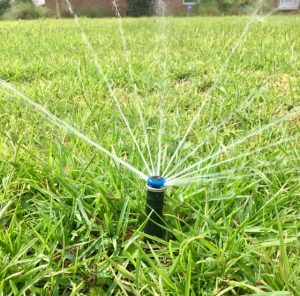
Irrigate on as needed basis during dry periods. Credit: Larry Williams
When watering, a thorough soaking to wet the soil to a depth of six to eight inches is much better for plants than light, frequent watering. Three to five gallons of water applied to one spot under the canopy of trees or shrubs should thoroughly saturate the root zone in that location. During dry periods, as a general rule), twenty-five percent of the root system, when watered thoroughly, can absorb all the water a plant requires at any given time.
When watering lawns, apply one inch of water per week when we are not getting rain. Although many sprinklers have irrigation rates of ¼ inch per hour, some may apply up to one inch per hour. Measure your irrigation rate and uniformity by placing several open-top containers of the same size under the sprinkler and see how long it takes to apply a known amount of water such as ½ inch.
An efficient irrigation program on turf should not begin until the lawn grass shows signs of moisture stress. Symptoms include a dull and bluish-green color and leaf blades folding. The most efficient time to irrigate is between sunset and sunrise because of less evaporation, less wind and lower temperatures. Early morning is the next most effective time to irrigate while midday is the least efficient.
Avoid fertilizing drought-stressed plants. Fertilizers are chemical salts and will dehydrate roots when water is in short supply. If you need to apply a pesticide, make certain the plant is not wilted at the time and spray during early morning or late afternoon. You should also avoid unnecessary pruning of plants during drought. Pruning encourages new growth, which has a high demand for water.
For more information on watering efficiently and drought tolerant plants, contact the UF/IFAS Extension Office in your county or visit the following website: http://gardeningsolutions.ifas.ufl.edu/care/irrigation.

by Larry Williams | Sep 19, 2024
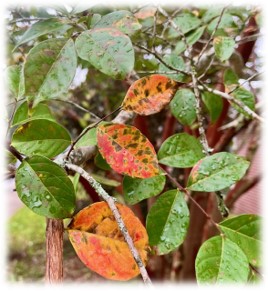
Normal fall leaves on deciduous crape myrtle. Credit: Larry Williams
Imagine you’re a leaf on a deciduous tree. In spring, you emerge and are blemish-free. You experience the first rays of light. You’ve never existed before. You begin to photosynthesize. This is what green leaves do. You’re normal.
The first windstorm occurs in April, blowing you into other leaves, branches and stems. You sustain a puncture wound. Trees don’t heal. So, any damage is permanent.
In May, a small population of aphids dine on the tree’s leaves. Ladybugs consume most of the aphids and a blowing rain dislodges the remaining few.
During the extended hot, dry weather of June and July, the tree’s owner is not watering properly and the tree begins dropping leaves. This is a normal process in many tree species during periods with insufficient moisture.
But you stay firmly attached.
The tree’s owner overdoes it in fertilizing his lawn and burns some of the tree’s leaves as a result. Most tree roots are shallow, having access to lawn fertilizer. Your leaf margin becomes brown and crisp as a result.
In August, you’re exposed to direct sunlight all day, partly because of the longer day length and partly because of the loss of other leaves that once shaded you.
In September, the tree’s owner applies weed and feed to his lawn. Tree roots growing in the lawn pull up some of the herbicide.
Tree roots grow two to three times beyond the branches, having access to herbicides applied to adjacent lawn areas. The herbicide injures many of the leaves, including you.
Shorter days and cooler temperatures of fall bring on changes in your physiology. The green pigment chlorophyll that has allowed you to produce sugars through photosynthesis since you first emerged is now breaking down.
As a result, your green color fades and fungal spots, sun scald and the puncture wound from spring become visible.
During October and November, many neighboring leaves turn loose and fall to the ground. This is part of the normal senescence process on deciduous trees.
Before you fall, the tree’s owner notices that you don’t look so good and becomes concerned about your brown spots instead of the uniform green color you had in spring. He has visions of another dead tree and rushes to his County Extension Office carrying you in hand.
A Master Gardener Volunteer explains to the tree’s owner that the spots are a natural part of the senescence process. The leaf is at the end of its life.
The tree’s owner is provided information on proper tree care.
The following spring, the tree produces new, healthy leaves, is provided better care and lives happily ever after!
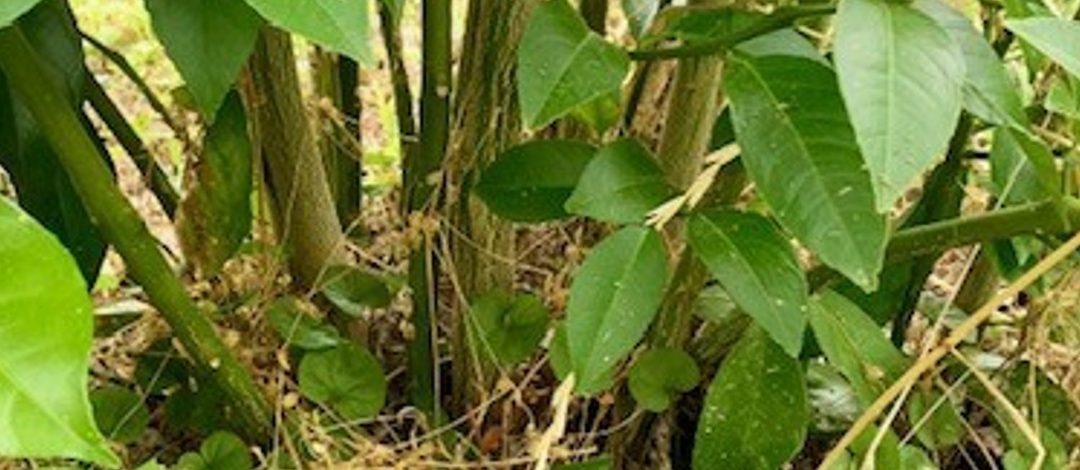
by Larry Williams | Jun 5, 2024
The widespread multiple night hard freeze that occurred in North Florida near the end of December 2022 resulted in numerous citrus trees becoming severely damaged. The above ground portion of many of these trees died as a result of the extreme cold.
I talked with numerous homeowners who were concerned about their citrus trees following that weather event. Many of these homeowners earnestly and hopefully watched for any sign of new growth on their cold injured citrus trees the following spring. When new growth appeared from the lower portion of the trunk and from the roots, the homeowner became excited with a false sense of hope that their citrus tree had survived and would again produce an abundance of desirable fruit.
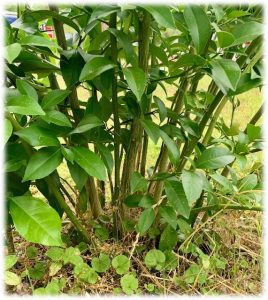
Cold injured citrus tree with new growth coming from rootstock. Credit: Larry Williams
Now in the spring of 2024, many of these citrus trees have somewhat regrown from those root shoots, not from the completely dead tops. In most cases, the freeze damaged, dead tops of the once large trees have now been pruned away to allow the multitude of small diameter vigorous green shoots to grow.
Most purchased citrus trees are grafted. So, what survived and is now regrowing is coming from the rootstock, not from the original, desirable, edible fruit producing top. That desirable top was completely killed.
To better understand this scenario, perhaps a basic definition of grafting will help. This definition was taken from a University of Missouri Extension publication on grafting. “Grafting is the act of joining two plants together. The upper part of the graft (the scion) becomes the top of the plant, the lower portion (the understock) becomes the root system or part of the trunk.” Understock is also known as rootstock.
Grafting involves joining two different individuals. These individuals have to be closely related. For example, citrus can be grafted to other types of citrus and peaches can be grafted to other types of peaches. But citrus cannot be grafted to peaches.
The rootstock was selected because of some beneficial trait(s): resistant to a root pest, superior cold hardiness, imparts a dwarf growth habit to the top, etc. But the same rootstock produces undesirable fruit: bitter, hard, extremely seedy, etc. The top (scion) was selected because of a superior fruit: sweeter, bigger, more disease resistant, etc. But the same scion produces an inferior/weak root system. So, grafting the two together allows for the “best of both worlds.”
When all that is left is originating at or below the graft union or rootstock, the eventual resulting fruit will usually be undesirable, sometimes not edible.
So unfortunately, the best option in this scenario is to start over with another healthy grafted tree that is well suited for the potential cold weather of extreme North Florida.
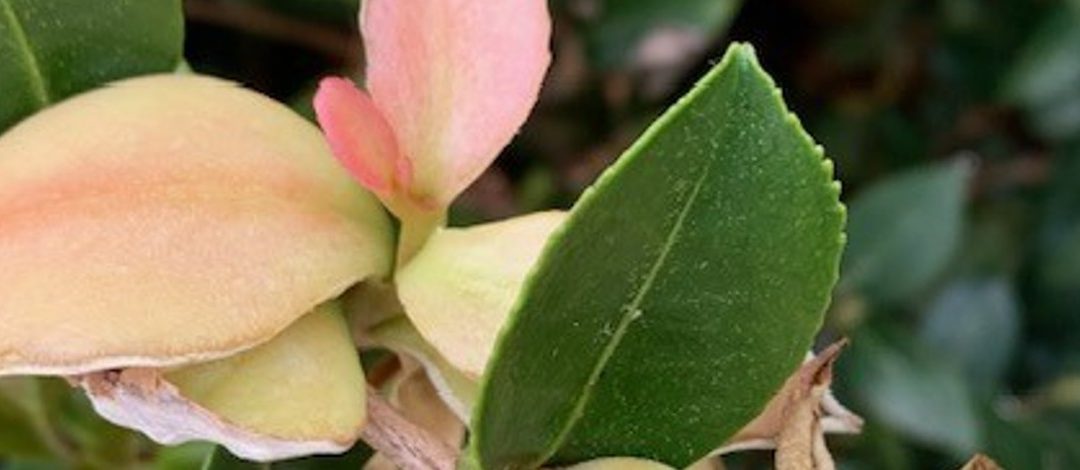
by Larry Williams | May 2, 2024
Q. Some of the leaves on my azalea and/or camellia are swollen and light green. What caused this?
A. This is caused by a fungus that has been relatively common this spring.
The fungus Exobasidium vaccinii causes leaves and flowers to become swollen or thickened, curled and waxy in appearance. This fungus causes leaves, and in some cases flower petals, to enlarge abnormally and is commonly referred to as azalea or camellia leaf and flower gall.
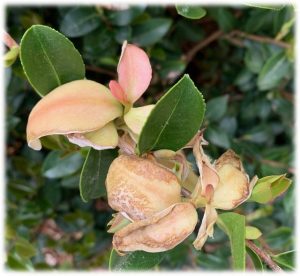
Exobasidium leaf gall on camellia. Credit: Larry Williams
Symptoms vary somewhat based on the host plant. In addition to azalea and sasanqua camellia, it can occur on blueberry, as well. Infected blueberry leaves turn an unusual bright red in spring with almost no swelling of tissue. With azaleas and camellias, leaves become large and distorted and eventually a white powder covers the galls. The white growth consists of spores, which is how the fungus reproduces. Galls ultimately turn brown and harden. Not every leaf will be infected. It’s more common for the plant’s lower leaves to be the most heavily infected but under humid conditions and in shaded locations galls may form on leaves throughout the plant canopy.
The disease relies on airborne spores produced in the whitish mold on the surface of galls in late spring to early summer to reproduce. The galls then form the following spring. It’s important to remove and dispose of infected leaves before they turn white with spores.
Once you see evidence of infected leaves, it’s too late for chemical control. Besides, there currently is no effective or practical fungicide to control this disease in the home landscape. But you can reduce the amount of infection on your plants the following year by pruning infected leaves and throwing them away before spores are produced. After removing infected leaves with galls, never leave them on the ground around the plants.
It’s best to bury, burn or place the infected leaves in a plastic bag and throw them away. This disease is more severe during a cool, wet spring. It’s advisable to not add to the problem by artificially providing the “wet weather” the spores need by frequently using an overhead sprinkler and keeping the foliage wet in the spring during disease development. This is exactly what this and many other plant diseases need – wet conditions. Yet another reason to water during early morning and on an as needed basis, versus allowing an irrigation system to frequently run when there is already adequate moisture from rain.
In the home landscape, the fungus does not cause any long-term problems for the plant. It just makes the plant’s leaves look ugly. The infected leaves will usually fall prematurely.










